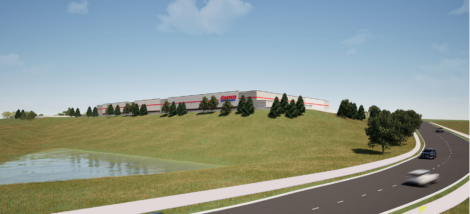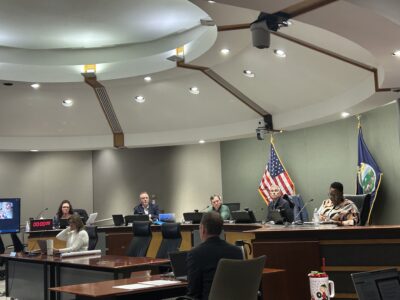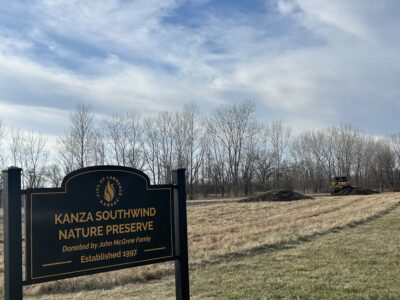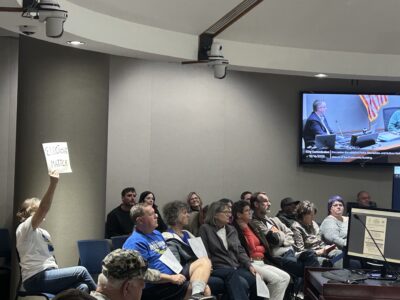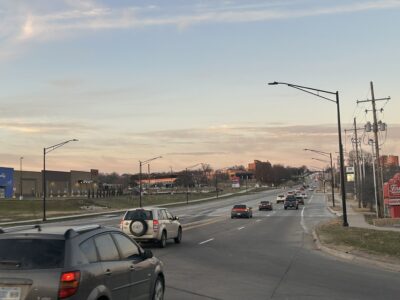Public Incentives Review Committee supports $1.4M in incentives for affordable housing development

photo by: Rendering by H2B Architects
Penn Street Lofts
Lawrence’s Public Incentives Review Committee has voted to recommend economic incentives for a mixed-use affordable housing development planned for the Warehouse Arts District.
The developer of the Penn Street Lofts project is requesting $1.4 million in economic incentives and a $550,000 grant from the city’s affordable housing funds. At its meeting Thursday, the PIRC voted to recommend all three of the incentives under its review, though not without opposition from some of the committee’s members. The grant request will be considered by the Affordable Housing Advisory Board next week.
Developer Tony Krsnich is requesting a 15-year, 95% Neighborhood Revitalization Area property tax rebate; an Industrial Revenue Bonds sales tax exemption on construction materials; and a rebate of building permit fees for the affordable units. Krsnich told the committee that the property tax and sales tax incentives were necessary for the project to move forward.
“In absence of those things, this project is not even close to being feasible,” Krsnich said.
Plans for the $11.8-million project call for a four-story, mixed-use development on three currently vacant lots at 800 Pennsylvania St. The ground floor would consist of about 4,500 square feet of commercial and retail space and seven market-rate live/work rental units. The upper floors would consist of 47 affordable apartments that would remain affordable for 30 years, after which time they could be rented at market value. During that period, Krsnich said the average rent would need to meet government affordability requirements for those making 60% of area median income.
City staff says in the incentives report that eligibility requirements have been met for the property tax rebate and the sales tax exemption portion of the request. The cost-benefit ratio for the city would be 1.30, meaning that for every $1 in public incentives, $1.30 of benefit value would be returned. The city’s policy is that the cost-benefit ratio be at least 1.25.
The project has already been awarded $7.9 million in Federal Low-Income Housing Tax Credits and $448,000 from the National Housing Trust Fund.
The PIRC voted 4-1 to recommend approval of the property tax and sales tax incentives and 3-2 to recommend approval of the building permit rebate. PIRC member Eric Kirkendall, who voted against all three incentives, said the affordable apartments should be for the lowest income bracket, or those making 30% or less of area median income, or that the project should create more jobs. PIRC member Shannon Kimball, the school board’s representative, voted against the building permit fee rebate because she said the school district had requested such a rebate for its school renovation projects and been told such requests were not an option. She said the city needed to be consistent.
Some PIRC members and neighborhood residents also expressed hesitation regarding the affordable units not being permanently affordable. PIRC member Patrick Kelly, who represents the Douglas County Commission, said he would love for the units to be permanently affordable, but he did not want to see the community lose the federal affordable housing funds that have been provided to the project.
“Because our goals on affordable housing are massive,” Kelly said. “And if we’re going to make progress toward those goals, I’m not sure we’re going to be able to do it one house at a time through Tenants to Homeowners. I think it’s going to take more than that.”
In a letter to the PIRC, the board of the East Lawrence Neighborhood Association wrote that it was not able to come to a consensus on the desirability of the project. Instead, the association submitted a list of 14 pros and cons. The pros included the development group’s good communication with the neighborhood, general conformity with the district’s design guidelines, and the provision of affordable housing. The cons included adding more density to an already dense neighborhood, parking concerns, and the fact that the units wouldn’t be permanently affordable.
To address the affordable housing shortage, the city’s goal has been to create permanent affordable housing that is scattered throughout the community. The city staff report states that the 30-year affordability period is reasonable because units will require significant rehabilitation by that point in time. Krsnich told the committee that without a funding source to rehabilitate the building in the future, designating the apartments as permanently affordable would essentially ensure they would become blighted.
The city’s Affordable Housing Advisory Board will consider the affordable housing grant request at its meeting Feb. 10, and the board’s recommendation will then go to the City Commission for consideration. The city incentives report states that including the affordable housing grant and the rebate of city permit fees, the cost-benefit ratio decreases to 0.95. However, the report also says some intangible benefits to the community are not captured in quantitative analysis.
The city staff incentives report and the PIRC’s recommendation will be sent to the City Commission, which is scheduled to make the ultimate decision regarding the city’s portion of the incentives package at its meeting Feb. 18. Douglas County and the Lawrence school district will also consider the property tax rebate.


